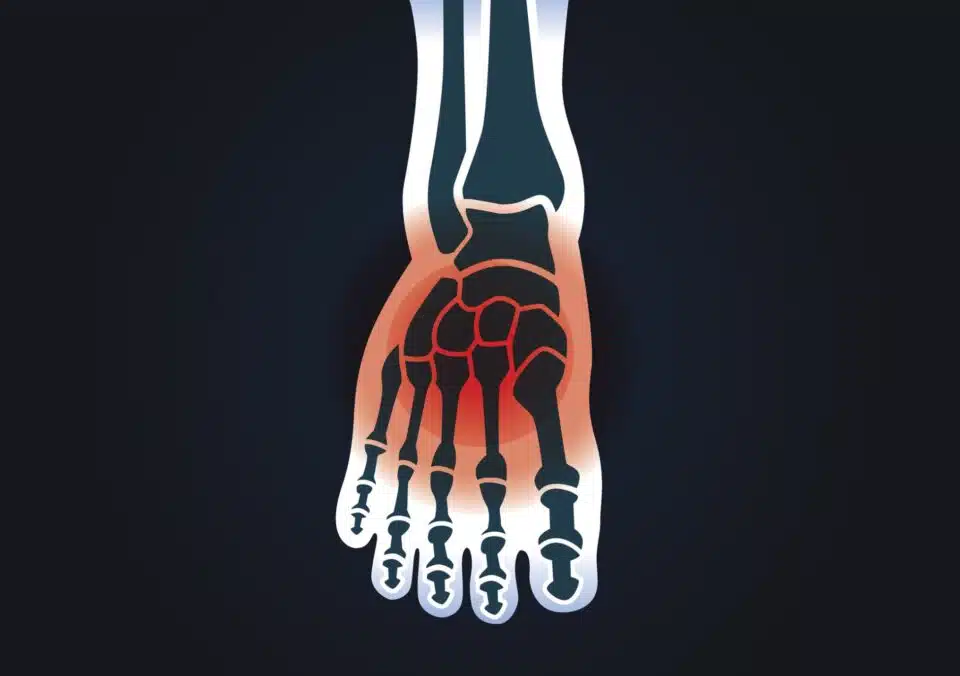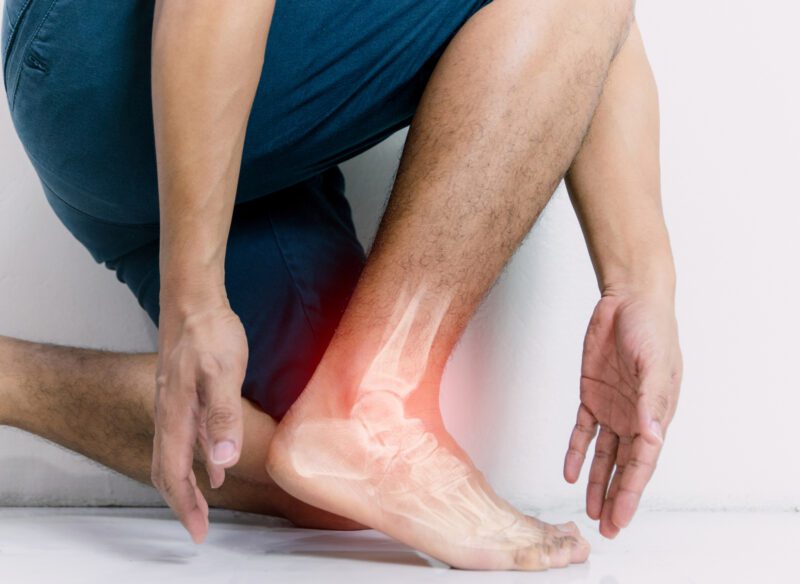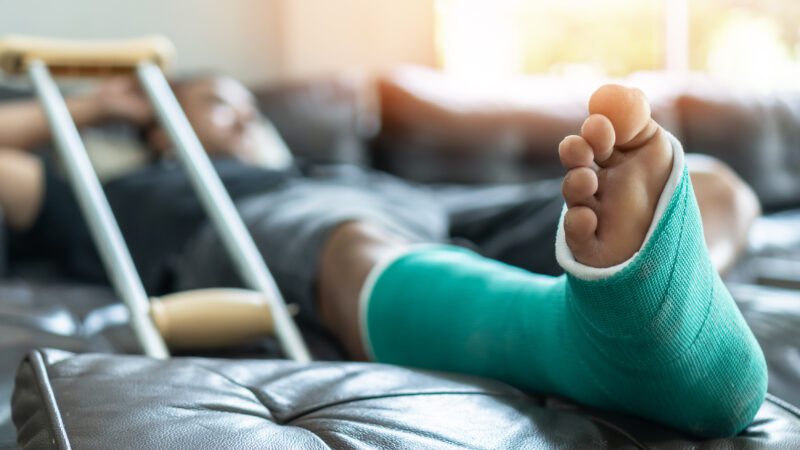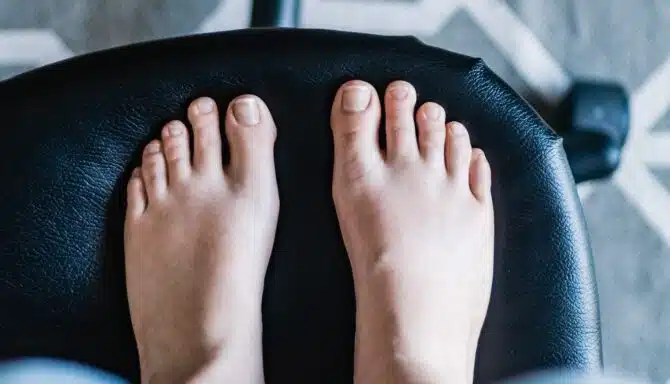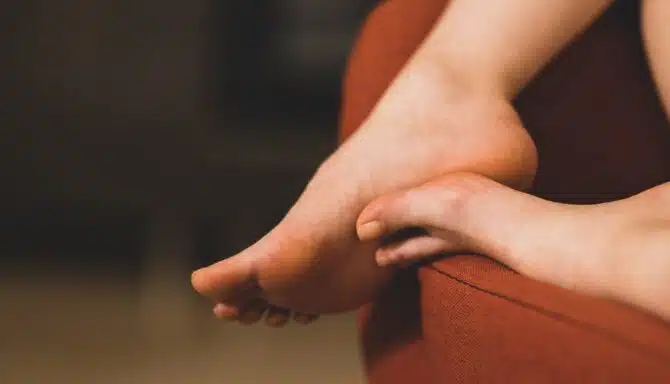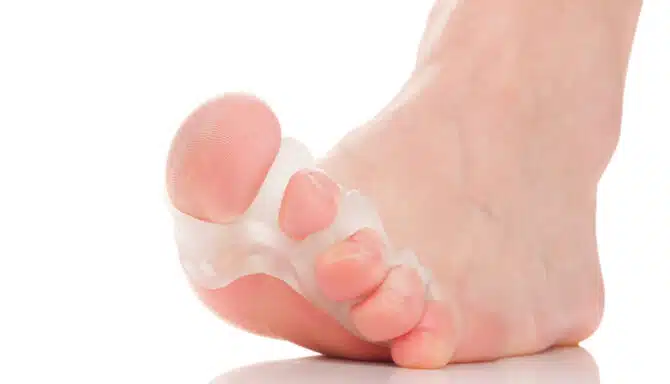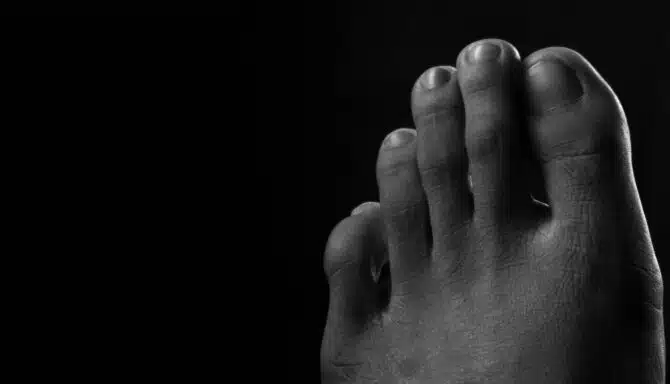The human foot has 26 bones, 39 joints, and over a hundred muscles, tendons and ligaments that keep it working properly. Let’s learn about the most important bones of the foot, what they do, and their role in foot health.
Understanding the Bones of the Foot
- Tarsal Bones
- Metatarsal Bones
- Phalanges
- Treatment Options for Bone-Related Foot Pain Causes
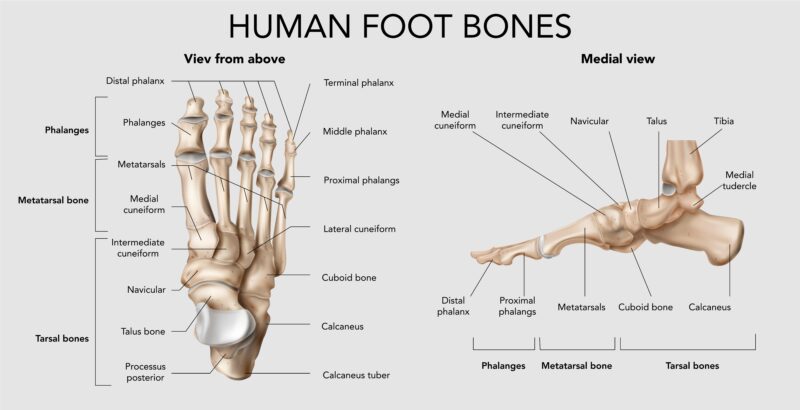
Tarsal Bones
Mount Sinai notes the tarsal bones in the foot are responsible for ankle movement and make up the rear of the foot. There are seven tarsal bones in total:
- The Talus Bone: This is a small bone, sometimes called the ankle bone, that helps you stand and keeps your ankle moving smoothly.
- The Calcaneus Bone: Also called the heel bone, this is a large, strong bone at the back of the foot that transfers body weight to the ground.
- The Tarsals: Five bones that work together to form the midfoot arch. The formation of these bones may pronounce your arch (high arches) or flatten it (flat feet). The height of your arch determines the level of arch support you need from your shoes or custom orthotics.
Tarsal bones also act as critical attachment points for various leg and foot muscles.
Metatarsal Bones
Five tubular bones in the middle and the top of the foot (the forefoot) connect the tarsal bones to the phalanges. Metatarsal bones look similar to each other and are numbered one to five, or from medial to lateral, by healthcare professionals. Each bone contains the following parts:
- Proximal base: Connects to the tarsal bones
- Slender shaft: Extends along the forefoot.
- Distal head: Connects to the phalanges in the toes
Metatarsal bones are the most vulnerable to blunt-force foot injuries. Their main function is to support body weight, help with balance and walking, and they play a role in forming foot arches.
Phalanges
The phalanges are 14 bones that make up the toes. The big toes and other toes consist of different phalanges:
- Big toe: Consists of the distal (joint close to the top of the toe) and proximal (joint in the middle of the toe) phalanges
- Other toes: Consist of three smaller phalanges called sesamoids, which look like pea-shaped bones
Phalanges bend your toes properly and help with lateral movements, navigating strange surfaces, and balance.
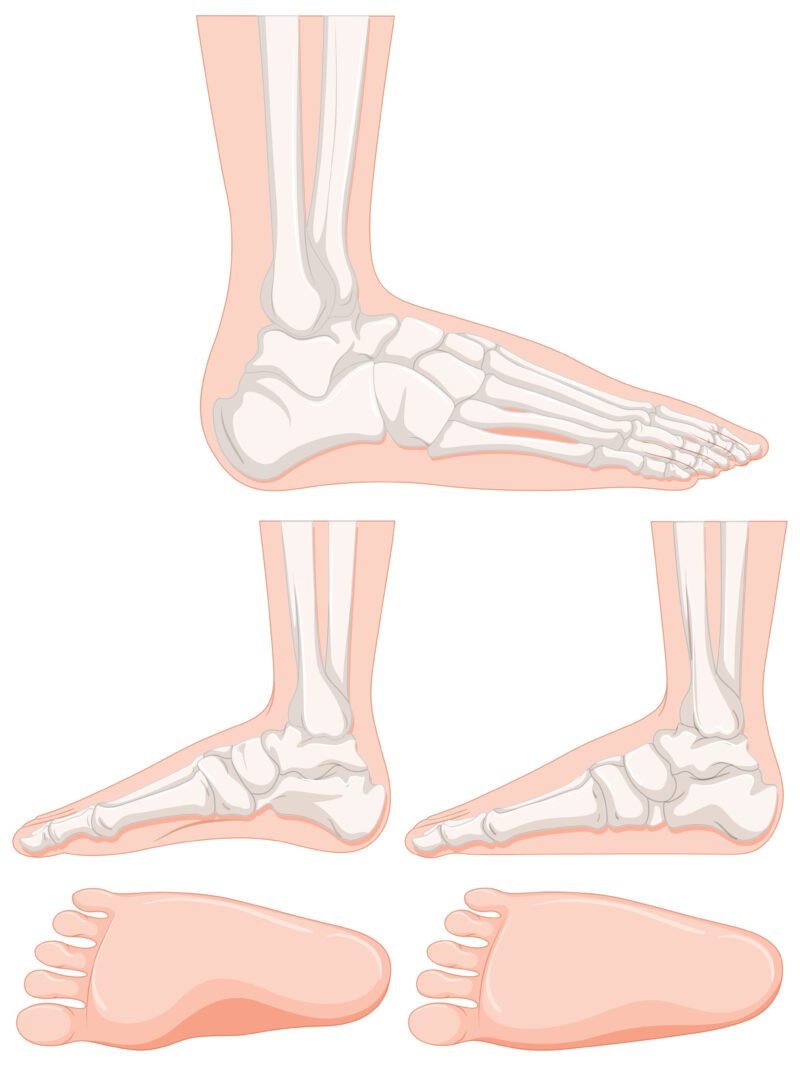
Treatment Options for Bone-Related Foot Pain Causes
Foot pain often correlates with the bones of the foot, namely blunt force trauma (stubbing your toes, dropping an object on your foot, etc.) and stress fractures. Here are some additional common issues:
- Osteoarthritis: Causes inflammation and pain via degradation of the cartilage in the joints
- Bunions: Associated with arthritic changes in the bones of the foot
- Sesamoiditis: Pain and inflammation in sesamoid bones in the toes
- Hallux Rigidus/Limitus: Decreased range of motion and stiffness in the big toe joint
- Hammertoes: Bent and contracted toes caused by arthritic changes
Practicing foot care by performing stretches and exercises before and after all activities can help with many of these problems. Gentle exercises can also be a part of the rehabilitation process for healing fractures and trauma. However, if your injury is acute, you should practice the RICE method from home (rest, ice, compression elevation) before beginning rehab.
Other treatment options include wearing proper footwear and inserts, taking a safe amount of anti-inflammatory medications, splinting, bracing and taping methods, aligners, and potentially shockwave therapy. You may need surgery if your condition is considered prolonged and severe.
